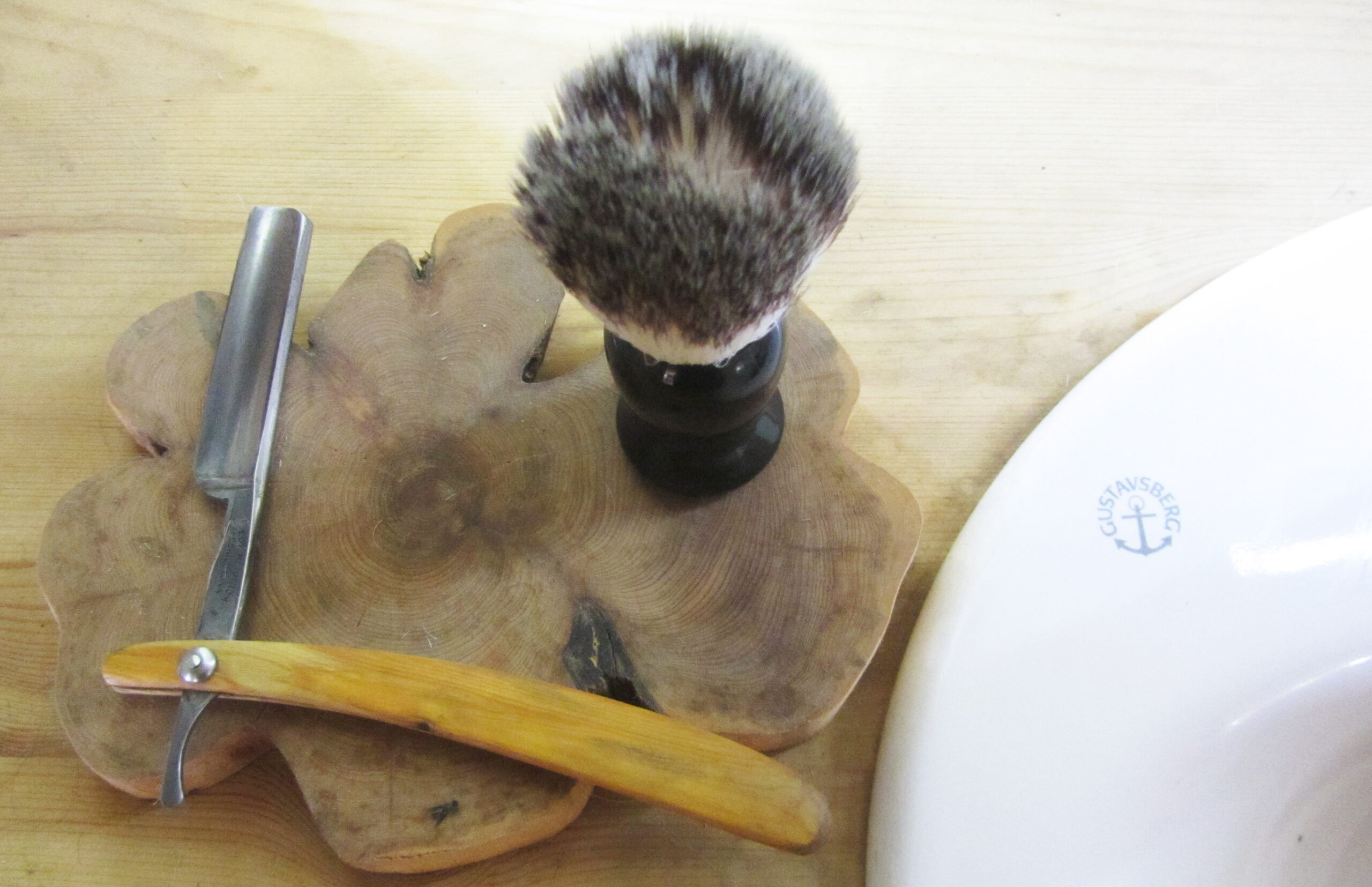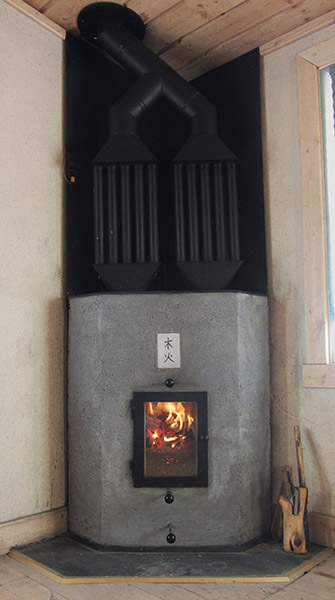IT WAS WITH the Bruntland Report as it is called, the UN report on "our common future" from 1987, which established the myth of the three pillars, Economic, Social and Ecological Development. Since then, they have hung there as a matter of course when it comes to sustainability. They are mentioned in the sustainability programs of universities and colleges, in courses and in textbooks. They are found in companies' sustainability profiling and in sustainability goals.
Author: Johan Falk (Page 2 of 2)
IN A CONVERSATION with Carl Schlyter (former EU-parlamentarist), Göran Greider (socialist and editor in chief at the Swedish post "Dalademokraten") says that when he asked the question whether man is equal or worse than the Large-Leaved Lupine as an invasive species, he was told that he was an Ecofascist.
It reminds me of when, during a lecture by Birger Schlaug (former green party politician), I asked the question whether Mankind is not to be regarded as a virus on planet earth. I was then told that such thoughts lead to fascism.
I'm really fascinated by how bad it is with self-criticism when it comes to one's own species. Just a hint that it might be the case that it is man, and not all these pests that man is trying to eradicate, that is the greatest damage. Yes, then you are quite guaranteed to meet those who not only refuse to listen, but who go on the counterattack and make comparisons with Hitler and Mussolini, with pure racism and extremism.
One can understand that animals react instinctively, so do humans most of the time. But one would also think that people also have the ability to ignore instinct and think a little longer. Above all, to be able to stand outside oneself and try to judge man in the same way as one judges other beings on the planet.
According to the Swedish Environmental Protection Agency, a species is invasive if it spreads mercilessly and takes over the niches of other animals or plants. It should also be harmful in some way. For example. Björnlokan is considered harmful because people can get burns from it. You must then make an effort to break it off, get plant juice on the skin and expose it to strong sunlight, which of course is fairly easy to avoid.
The killer snail, which is actually a Spanish forest snail, has accompanied man's transports of soil and moved to new areas where it can become numerous and cause inconvenience to the gardener by eating lettuce and other plants that man wanted for himself. For species other than humans, the Spanish forest snail is hardly a problem.
Here in Uppsala, there are two invasive species that have spread along all roads, rivers and ditches. It's the Russian old man and the herb. None of the species are listed by the Swedish Environmental Protection Agency as invasive species.
The interesting thing is that all these invasive species have been spread by humans! So it is not the species themselves that have become invasive, it is man who has implanted them, voluntarily sometimes, but mostly involuntarily through our lifestyle.
Mankind has spread throughout the planet as no other animal has succeeded in doing. There is barely a square meter on the planet where humans have not walked. Man is adaptive and has managed to adapt to the most inhospitable areas of the earth. In northern Siberia it will be -50 degrees in the winters, yet there are people who live there permanently. In Antarctica, there are settlements, even if only for research. In the highest mountain areas where the air is so thin that it is barely enough to oxygenate the body, people also live there.
Man takes over the habitat of other species more than any other species on earth. Man pollutes, burns down and destroys forests, fields and seas when he conquers the land. It is quite obvious that man meets all the requirements to be invasive, and to an extent that no other invasive species has succeeded with.
Should action be taken against this invasiveness? Yes, you would do that if some other species behaved the way humans do, so the answer is pretty obvious. Mankind is also affected by the destruction it brings to the world as a consequence of exploiting new environments.
We humans must simply realize that it is a must for a sustainable future, that we regulate our expansion and retreat to provide habitat for all the other species on the planet. If not for the sake of these species and life forms themselves, then at least for the sake of man. We have nothing to gain from destroying the planet on which we are to live.
Man must retreat through decreased growth, we must reduce our numbers and reduce our consumption to reduce our impact on the environment in which we live. These are simply prerequisites for sustainable development.
It's about time to do something about the world's most invasive species.

Razor Edvard Neiström No 62 with hand-made scales of wood and razor brush with synthetic bristles.
WHAT DOES SHAVING HAVE TO DO WITH A SUSTAINABLE LIFESTYLE?
The shaving tools available on the market today are more or less disposable items. You keep the stem, but the blades that only last a few times are thrown away when they are worn. It means a huge material consumption throughout life. Imagine using two blades a week for 70 years. There will be 7280 disposable blades through life!! In addition, the models are replaced, so you will have to change the entire razor several times in life to be compatible with the changes. The blades for your old razor will no longer fit after a few years and they are not available for purchase. This is what it looks like in the wear and tear society we have created and which we today call development and progress.
Disposable razors do not work to shave off a long beard or even a week's stump. Then the hairs get stuck in between the blades and you have to constantly change to new ones because they are almost impossible to clean.



THE MAIN BUILDING AT STATION LUNDA is now newly paneled and is supplemented with an outer panel lining around windows and doors. This has since been painted with clay paint. This is a paint that is little known, but that has an ancient origin.
In this case, the paint of the walls consists only of clay and nothing else. The clay is excavated from the Uppsala plain's reservoir of blue clay in a riverbank close by. It has then been slurried to filter out sand and coarser particles and has then been diluted with water to a suitable consistency. It is important to keep the fine particles. It is the nanoparticles in the clay that make it adhere to almost everything. I have even painted over smooth plastic and found it to stick there better than any paint on the market. The fine particles in the clay hold the color together and penetrate an outdoor panel of sawn timber. It is to some extent also possible to paint on a planed surface, but it then has less weather resistance. I have painted the underside of the porch roof and the eaves with the clay paint on that planed surface and it remains well because it is a protected surface.

THE LUNDA STOVE came about in an attempt to improve the wood stove in general and to create a stove that could be built on-site and that also would improve both combustion and heating efficiency. It took a year to plan and build this stove. The result was very good. It is perhaps one of the world's best wood stoves with very high efficiency and the smoke is invisible and odorless when fired properly, except for a short time when ignited, which indicates very low emissions.
The Lunda Stove has a concrete frame. But so that it would not be too heavy, many tests were done with lightweight concrete mixtures that were subjected to fire tests. Once the concrete mixture was determined, molds were built to cast the outer casing in a single piece. This was done so that the stove would be completely smoke-tight. The interior is a rather complicated network of walls and ceilings that allows supply air to be taken in from the outside through a hole in the floor and which can then be taken directly into the combustion chamber floor or redirected so that it instead enters from the combustion chamber roof. The stove was designed to allow for reverse combustion when the supply air to the combustion chamber is taken from above and the flue gases pass out through the bottom of the combustion chamber and then pass on its outside and up to the convectors.
The combustion chamber is very well insulated to provide a high efficiency by allowing high combustion temperature. The principle of the stove is to first burn all gases as well as possible, and only when they have burned, take out the heat in the remaining flue gases. Most stoves are built so that the heat radiation from the hearth itself will contribute to the heating in the room. With this principle, you get worse combustion because there are heat losses in the combustion chamber and lower combustion temperatures.
A Blog about Sustainability

Subscribe to News from Station Lunda
You wil get a monthly notifictation about new posts and publications.
STATION LUNDA
Johan Falk
Danmarks Lunda 21
75598 Uppsala
Sweden
www.stationlunda.se
johan@stationlunda.com
© 2026 Station Lunda
